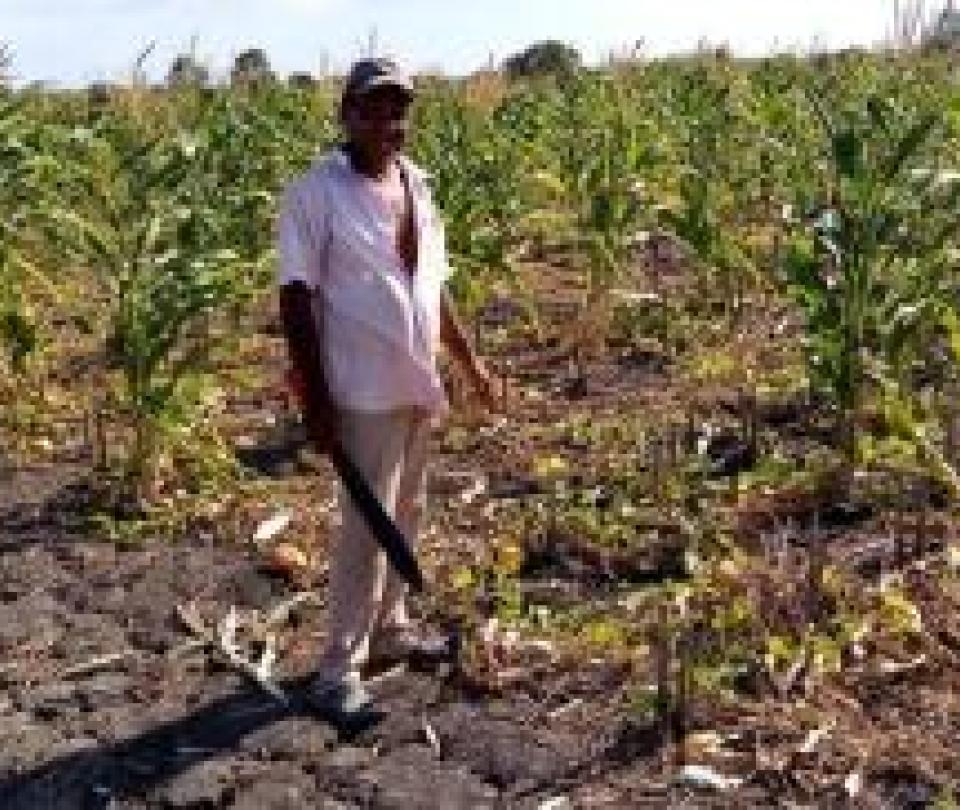A Dartmouth College studyone of the 8 gringo universities founded by the British before the independence of the United States, assures that the phenomenon of El Niño, which is expected between July and September, could cost the world trillions of dollars in losses that would last until 2029.
(See: When would the El Niño phenomenon arrive and how prepared we are).
“The calculations are based on our analysis, if the average El Niño forecast holds,” Justin Mankin, co-author of the study and assistant professor of geography at Dartmouth College, tells Portfolio.
“The weather and climate of Latin America is very sensitive to El Niño and its response depends on the season. As convection moves east in the Pacific, heavy rain falls on the western side of the Andes and on the southern part of the continent.“, says.
Consequently, “heavy rains present dangers of road washouts and landslides. In Colombia, on the eastern side of the Andes, a canonical El Niño response is drying up and warmer than average conditions, with implications for drought and agricultural damage.”.
Dartmouth College researchers used in the study “a statistical framework that relates El Niño to the change in gross domestic product or GDP at the country level. The idea is that El Niño events are essentially random in time, and therefore we can estimate the change in economic growth in the absence of other factors and examine how long they persist,” Mankin says.
(See: El Niño phenomenon would generate a multi-year recession, according to a study).
It notes that while it is not an El Niño-Southern Oscillation (ENSO or ENSO) forecaster, “the statistical and dynamical models agree that El Niño will occur, but not strongly. I guess the analysts are splitting the difference. Statistical models predict a weaker event, dynamic models a stronger one, and experts place their forecast somewhere in between.”.
Perhaps for that reason andhe Colombian Ministry of the Environment does not rule out the possibility that the phenomenon, estimated to be low and moderate, may vary and present a greateror intensity, as officially admitted.
The researchers admit in the Dartmouth College study that although they do not know how the El Niño phenomenon 2023-2024 will really present, they consider that “The world economy is much bigger and our planet much warmer than it was in 1982 or 1997. Our estimates are that with El Niño the US lost US$4.1 billion in 1982 and US$5.7 billion in 1997says Mankin.
Colombian climate experts such as Germán Poveda, professor at the Department of Geosciences and Environment at the National University of Colombia, Medellín, believe that our country must prepare for droughts (hydrological, meteorological, and agricultural); air temperature increases; heat waves; forest fires, with strong social, environmental, economic and ecological impacts in many sectors, including human health.
anticipate that cardiovascular and respiratory diseases could also increase; skin cancer; diseases of the lungs, kidneys and those transmitted by mosquito vectors such as malaria, dengue, leishmaniasis, zika, chickungunya).
(See: What would be the intensity of the El Niño phenomenon in Colombia).
When reviewing the effects caused by similar phenomena in 1982 and 1998 in the US, the researchers noted that economic productivity decreased by 3% over the following decade and that a similar event in 2023 could cost that country US$699 billion.
“Our study shows that after El Niño economic productivity was compressed for more than a year after El Niño”, according to Mankin.
It is expected that the first economic impact of El Niño in our region would affect, above all, countries like Ecuador and Peru, but also Colombia that have coasts on the Pacific.
In the events of 1982 and 1997, Peru and Indonesia, also bordering the Pacific, suffered a 10% drop in economic output over the next three years, according to Mankin.
Poveda recalls that in Colombia El Niño affected all sectors of society and the economy in the past. The electricity sector suffered its impacts, due to the decrease in rainfall and river flows; health, agriculture, livestock, river navigation and the environment, by affecting the quality of water and air, etc. But, on this occasion, he warns that things could be worse due to the combination of the effects of El Niño with climate change, which intensify the frequency and duration of droughts and heat waves, among other effects, that put health at risk human by mixing high temperatures and high humidity.
Other impacts on the countries’ economies will be damage to infrastructure due to heavy flooding, which could disrupt the food supply chain. To this would be added the enormous losses in crops due to floods or droughts.
BRIEFCASE






![[Img #74675]](https://thelatestnews.world/wp-content/uploads/2024/12/They-discover-a-new-class-of-X-ray-sources-in-the-150x150.jpg)







